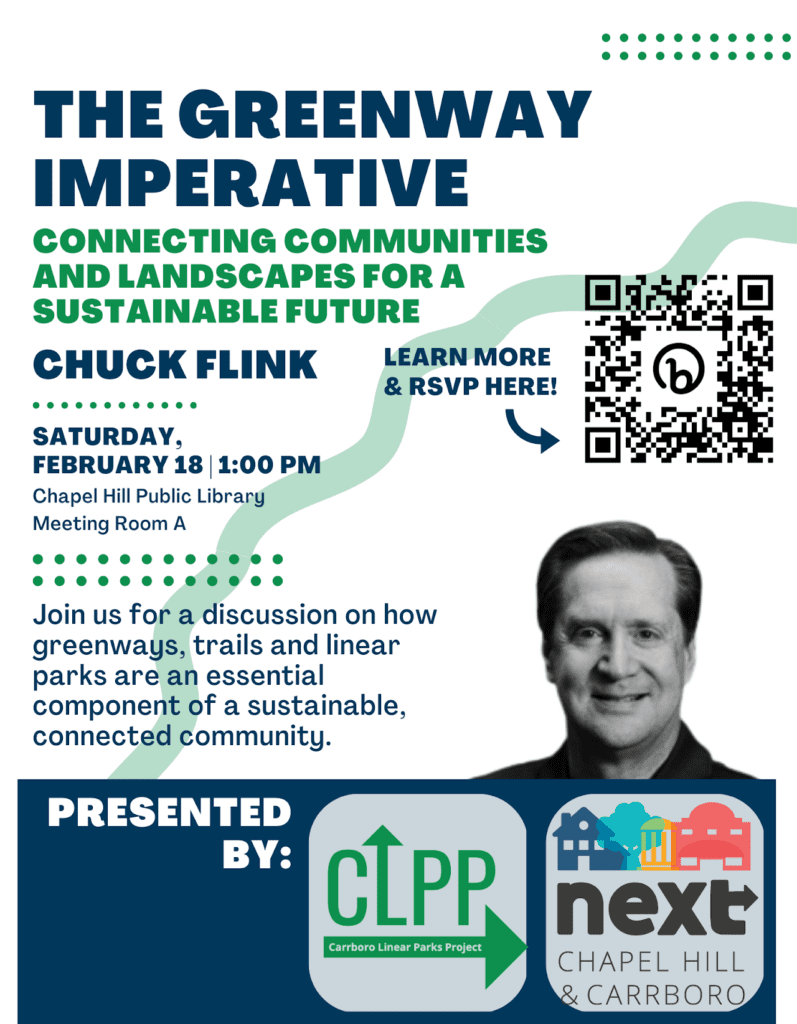Meet a greenway expert:
The Carrboro Linear Parks Project is bringing Mr. Flink to the Chapel Hill Library at 1pm on February 18th to speak about his experience building over 200 greenways, including the Grand Canyon Greenway Trail and the American Tobacco Trail.
The other morning I went for a walk on Bolin Creek in Carrboro. What you’re saying when you tell someone that you went for a walk on Bolin Creek is that you walked on the sewer easement that runs alongside Bolin Creek. Buried underneath the cleared path that so many of us use is a 15-inch concrete sewer line that was originally installed back in the 1960’s, decades before the Cobblestone or Bolin Forest neighborhoods were built. The sewer line carries wastewater from the nearby neighborhoods like Spring Valley and Fair Oaks. Why did the town install it along the creek so many years before these neighborhoods were constructed?

Sign up for the Carrboro Linear Parks Project mailing list to get updates on building out Carrboro’s greenway network. Visit the Carrboro Linear Parks Project website for more information. There’s also a helpful FAQ with answers to many questions.
Update: We support the creekside alignment for the reasons detailed here.
In 1965 the town and the school district installed the sewer line along Bolin Creek to serve the town’s newest school which was being built near Homestead Road. Chapel Hill High School opened the following year and replaced the town’s two segregated high schools with a single integrated high school. Ever since then people have been using the easement as a recreational path to enjoy the beauty of Bolin Creek.

A few days before my walk it had been raining a good bit and the easement was still flooded in many areas and quite muddy throughout. The easement that was designed and installed in 1965 was meant to harbor a large pipe that moves poop – it was not designed to be the incredibly popular recreational trail that it has become in the last several decades, and there are some destructive consequences that result from that.
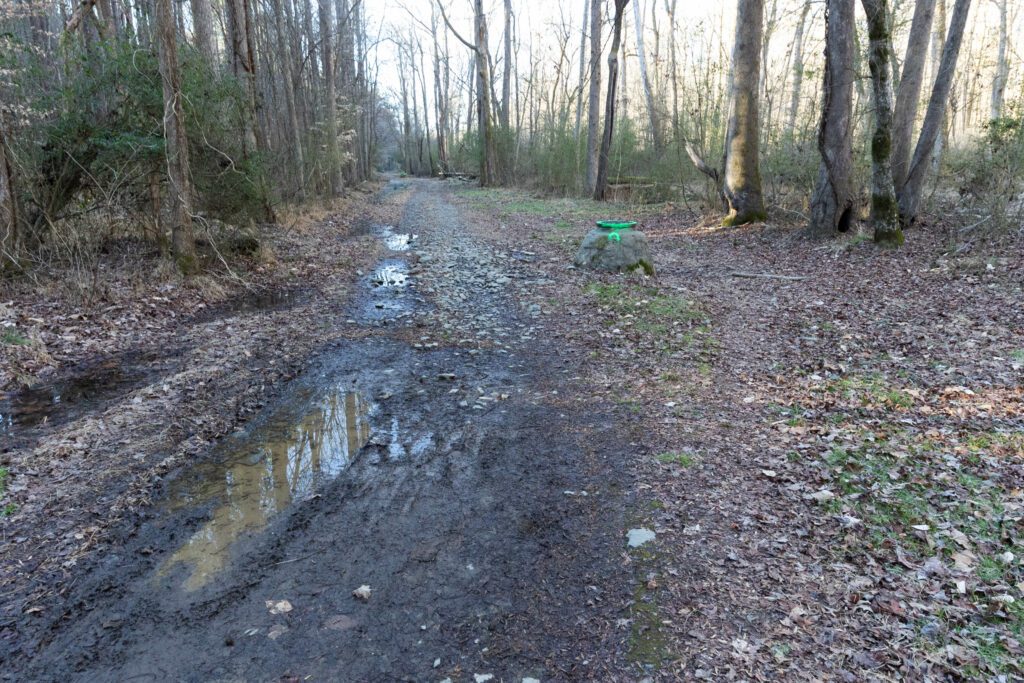
Rain or not, inevitably trail users continue to show up in poor conditions and walk around the mud they encounter. This intrusive human activity creates informal or “braided” trails along an ever-widening network of mud puddles. The footpaths we create to keep our shoes from getting muddy have been expanding into the forest and up to the creek’s edge, which degrades vegetative buffers and increases runoff into the stream.
In the picture below you can see the direction of the easement in green, but because this area floods regularly, users are making their own path (in red) around the obstacle and bringing the trail right up to the creek’s edge. Multiply this activity by four or five decades and you can see how runoff makes its way unimpeded into the creek across the easement.
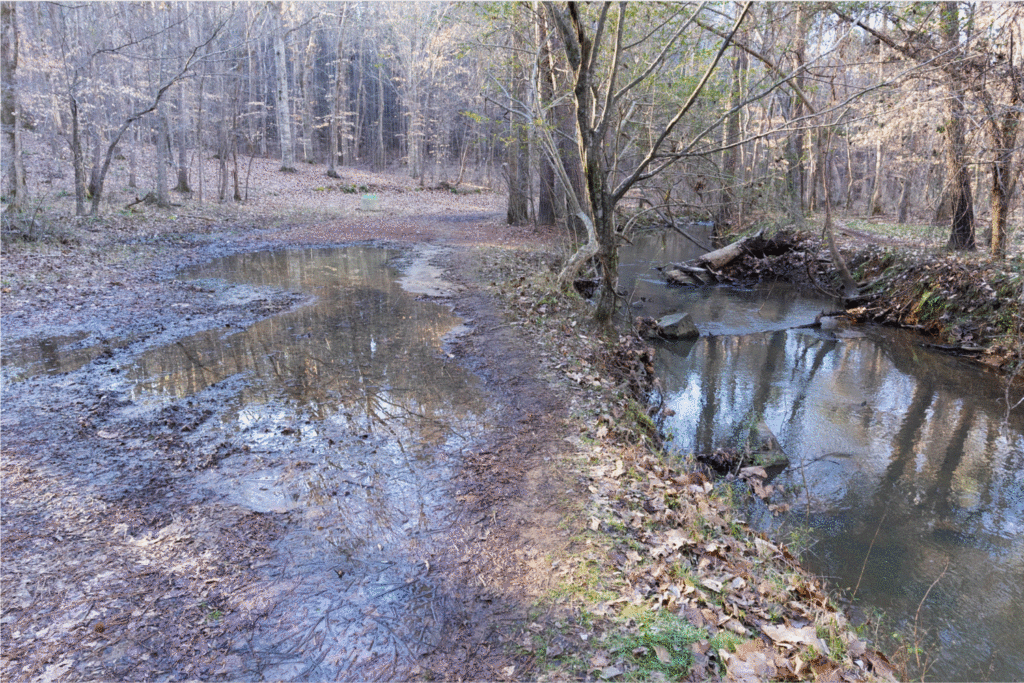
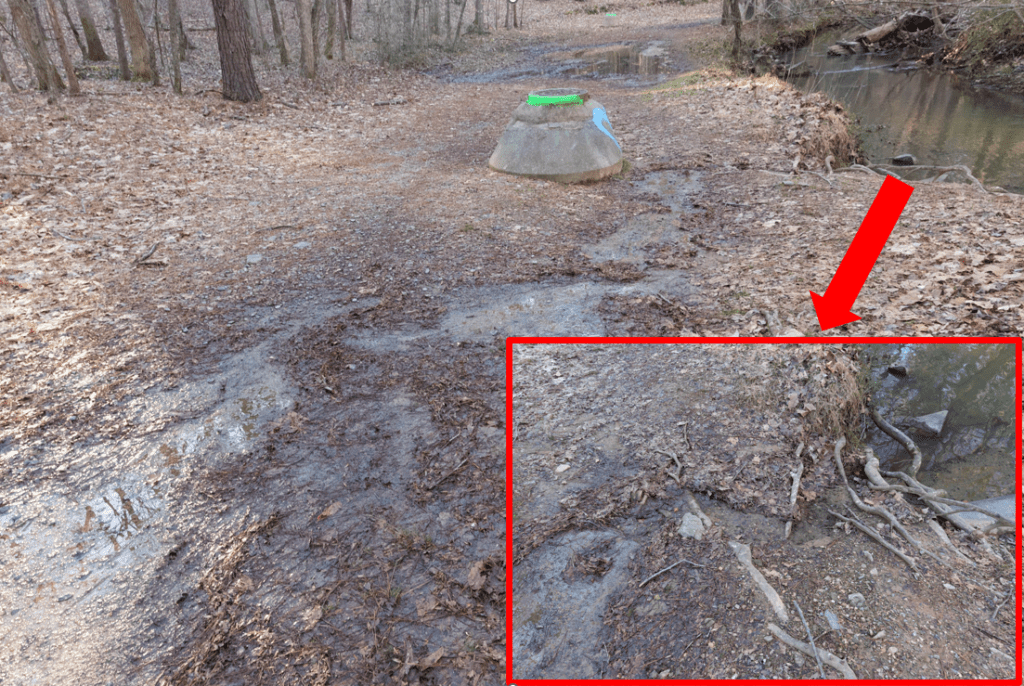
This is where Bolin Creek resembles the Grand Canyon National Park in the 1990’s: a beautiful natural area that was not designed for the sort of human activity that was spilling out and degrading the surrounding area.
It used to be that if you visited the Grand Canyon you had to compete for car parking along the side of the road and then walk between destinations on informal footpaths. These footpaths were damaging sensitive areas in the park and made it difficult for everyone to experience the beauty of the Grand Canyon in a way that wasn’t also destructive to it.
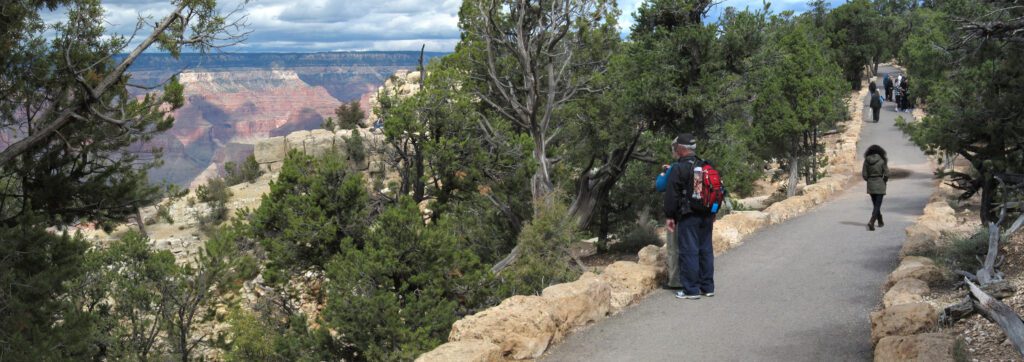
A group of planners and designers volunteered to work with the National Park Service to devise a greenway network that would improve accessibility and restore the damage done by park visitors making their own way. One of the principal architects of the new greenway plan was Chuck Flink, who currently teaches at NC State University and is a Fellow of the American Society of Landscape Architects.
The Greenway Imperative with Chuck Flink
Join us for a discussion on how greenways, trails, and linear parks are an essential component of a sustainable, connected community.
Saturday, February 18 at 1:00 PM
Meeting Room A
The construction of the trail was not particularly well received by many park staff, mostly because it was designed to be a 9-foot wide paved asphalt path. Paving additional areas of the park was anathema to some of the park staff because asphalt is impervious and was seen as damaging to the sensitive environment. But after much discussion and a successful pilot phase, the greenway designers were able to convince staff that providing a durable surface for feet and wheels would better contain human activity while making it possible to reclaim and revegetate the land that was damaged by unmanaged human use.
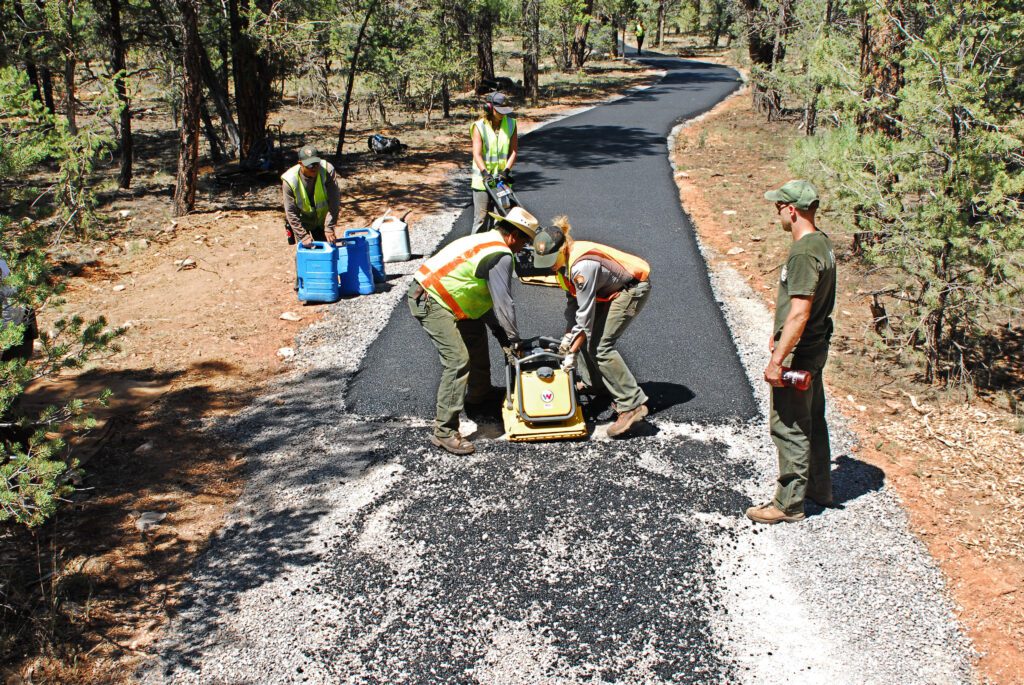
This is one of the key benefits to constructing the Bolin Creek Greenway in Carrboro: providing a defined paved surface along the heavily used easement will open up possibilities to reclaim and restore natural areas around the creek as part of the same project. These strategies are clearly outlined in the town’s 2009 Bolin Creek Greenway Concept Master Plan. In some areas, like where I was on my walk, the plan recommends a raised boardwalk or moving the trail further upland so that the damaged area near the creek can be regenerated.
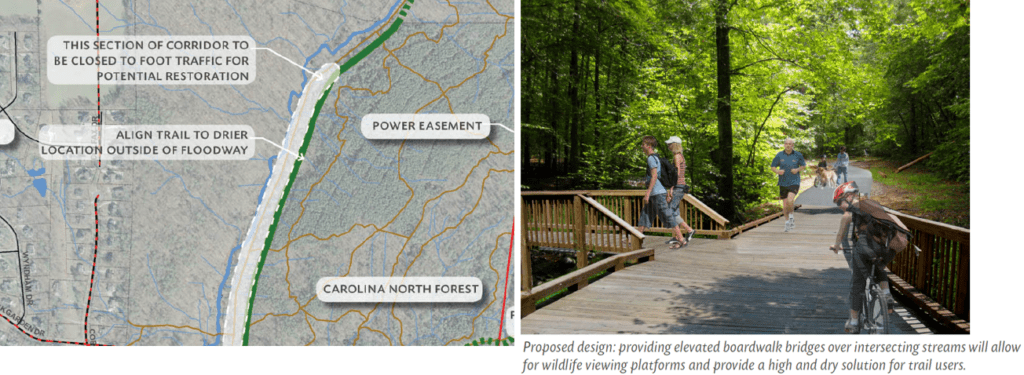
My awareness of the backstory about the Grand Canyon Greenway Trail comes from Flink’s book called The Greenway Imperative: Connecting Communities and Landscapes for a Sustainable Future. The Carrboro Linear Parks Project is bringing Mr. Flink to the Chapel Hill Library at 1pm on February 18th to speak about his experience building over 200 greenways, including the Grand Canyon Greenway Trail and the American Tobacco Trail. Mr. Flink was also the consultant hired in 2008 by the Town of Carrboro to design the Bolin Creek Greenway Concept Master Plan, so he is very familiar with Carrboro’s incomplete greenway network. The event is free and we hope to see you there!
